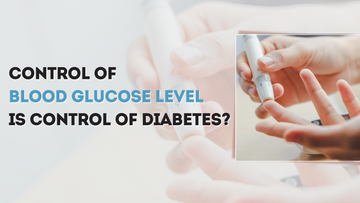
Why Is It Important to Manage Diabetes Well?
Recent studies have demonstrated a correlation between overall good blood sugar control and a lower incidence of diabetic complications. Therefore, the answer is that it is crucial to maintain optimal glucose control. When trying to maintain tight control, people with Type-2 Diabetes and some people with Type-1 Diabetes who are taking insulin may experience too many episodes of Hypoglycemia (Low Blood Sugar). The objective is to strike a balance between attempting to maintain control as close to normal as possible and attempting to prevent hypoglycemic episodes.
The Main Factor Controlling Blood Sugar Is Insulin
This hormone is created by beta cells and is continuously released into the blood. The pancreas, which is an organ located behind the stomach, contains beta cells. To maintain the ideal blood glucose level, insulin levels in the blood are precisely controlled.
High insulin levels cause sugar to leave the bloodstream and enter the cells of the liver, muscle, and fat, where it is stored for later use. Sugar and other fuels can be released back into the bloodstream when insulin levels are low.
In The Pancreas, Insulin Is Produced
Insulin levels in the blood are low and relatively stable during sleep and between meals. The body can access its fat and glycogen reserves for energy as well as release sugar and other fuels from the liver thanks to these low insulin levels. Background or basal insulin is the term used to describe the insulin taken between meals and overnight. Your blood sugar level will be somewhere between 60 and 100 mg/dl if you haven't eaten in a while.
The pancreas quickly increases the amount of insulin released when you eat. Bolus insulin is the name for this spike in insulin that occurs after eating. Blood sugar levels peak after a meal at less than 140 mg/dl and then return to normal.
Impact Of Insulin
Over the course of 24 hours, normal (non-diabetic) blood glucose and insulin levels
There is a low, steady secretion of insulin overnight while fasting, and between meals, with spikes of insulin at mealtimes, to maintain the blood glucose in a narrow range throughout the day.
Incretins and glucose-counterregulatory hormones are two additional hormones that work with insulin to control blood sugar, but insulin is the most significant.
Monitoring Blood Glucose (Blood Sugar)
There are two methods that can be used to measure blood glucose levels. A sample taken at any time can be used to randomly determine blood glucose levels called a "Random Blood Sugar" or RBS.
When someone is "Fasting," meaning they haven't eaten anything or ingested any calories in the previous eight hours, blood sugar levels can also be checked, usually, this is done overnight, "Fasting Blood Sugar" or FBS is what is referred to as an overnight fast.
Within three hours of eating, blood sugar levels in a non-diabetic with normal insulin production and activity will return to "Fasting" levels. Diabetes patients both type 1 and type 2 might not be able to lower their blood sugar levels this quickly after eating or consuming a caloric beverage. On our page about diagnosing diabetes, you can learn more about this.
Normal fasting blood glucose levels should be between 70 and 110 mg/dL
Frequently keep checking blood glucose. The objective of this aspect of diabetes management is to maintain fasting blood sugar levels below 140 mg/dL, ideally in the 70 to 120 mg/dL range.
To track how well blood sugars are controlled, it would be ideal to check blood sugar four times per day or more. You could use this information to modify your diet and medication to reach this goal. Blood glucose levels are typically checked before each meal and before bed.
It is highly recommended that patients record these blood sugar readings in a diary because the treating physician will be able to use this data to make better treatment choices.
Glycosylated hemoglobin Measurement (Glycohemoglobin Or Hemoglobin A1c)
Measurement of Glycated Hemoglobin on a regular basis. Hemoglobin A1c or glycohemoglobin blood tests are another way for diabetics to check on the management of their blood sugar levels or glycosylated hemoglobin.
Contrary to straightforward measurements of blood glucose levels, this test cannot be performed at home; it must be conducted through a local laboratory or blood must be drawn at a doctor's office. Glycosylated hemoglobin concentration and a person's most recent average blood sugar levels are highly correlated.
The hemoglobin A1c test will reveal the diabetic's blood sugar patterns over the previous two to three months. Hemoglobin A1c will be high if blood sugars have generally been running high over the past few months. The hemoglobin A1c level will be close to values seen in healthy individuals if blood glucose levels have been running close to normal over this time.
It is a crucial value to periodically check. According to studies, glycohemoglobin levels in the "better ranges" are associated with a lower occurrence of diabetic complications in later life. Hemoglobin A1c levels are typically measured in people with type 1 diabetes every three to four months, while they are frequently measured less frequently in people with type 2 diabetes.
In The End
Diabetes can not be cured completely but can be kept in control with Ayurvedic practices without any other side effects on your body. Moreover, with Jeevani it can be delayed for a longer time. Also, it's not just about Ayurvedic or any other medications, following a disciplined life with proper yoga, exercise, diet, etc there is no need for any medications. The AADAR family always wants everyone to live without any medications and have a healthy life.
We have Health Experts who can easily connect with you and discuss your sexual concerns. You can consult your family doctor first to get the most accurate diagnosis, or you can contact our Health Expert or connect with us at +919867667699.




